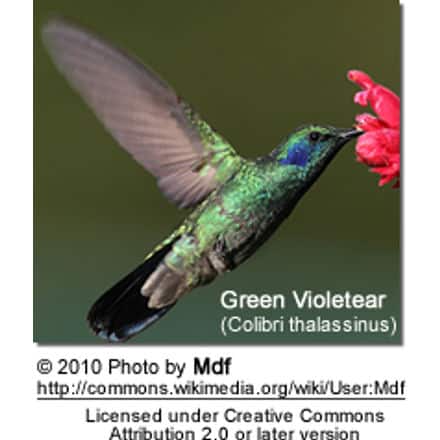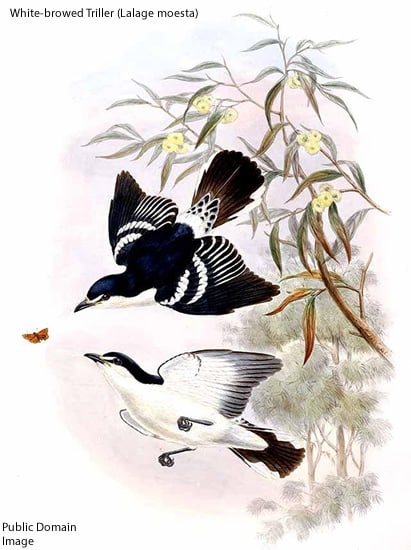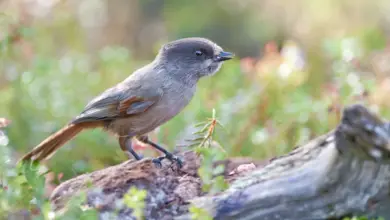Hummingbirds found in Arkansas, USA
Hummingbirds found in the USA (by U.S. State) … Canada … Mexico … Puerto Rico … Jamaica … Honduras
Hummingbird Information … Hummingbird Species Photo Gallery
Following listed (with photos) are hummingbirds found in Arkansas.
Hummingbirds that were previously only migrating through Arkansas are increasingly staying there over the winter. Most of the hummers that remain over the winter, are the Rufous Hummingbirds (which can easily be identified by their bright orange-red throats). Another one was the Calliope Hummingbird (the smallest North American hummingbird). Another species that was recorded during the winter time was the Ruby-throated Hummingbird.
Scientists assume that the increasing numbers of wintering hummingbirds may be attributed to the following factors: climate change, increasing amounts of hummingbird feeders to help them through the winter. It could also been here that more people are watching them now accounting for the increasing reports; and that they have been there all along.
Identification of many hummingbird species is often most easily done by the males’ distinctive iridescent throat patches, which range from orange, red, purple, green, blue; and these colorful patches may be restricted to only the throat or in some species may extend over the crown or even over most of the head. However, in poor light conditions, these color patches may simply look greyish/black, which makes identification more difficult. Females and juveniles of the different species often look alike, but some physical clues can often be found.
Ruby-throated Hummingbirds (Archilochus colubris) – Native and Common – The only hummingbird known to nest and breed in Arkansas. Ruby-throats arrive in early April, sometimes in mid- or late March. Leave in September or October.
The male has a ruby-red throat, a white collar, an emerald green back and a forked tail.
The female has a green back and tail feathers that are banded white, black and grey-green.

Rufous Hummingbirds (Selasphorus rufus) – Native and Common
These hummingbirds are usually found in gardens and at feeders. These birds are fearless, and are known for chasing away other hummingbirds and even larger birds, or rodents away from their favorite nectar feeders and flowers.
Males can easily be identified by their glossy orange-red throats.
Females have whitish, speckled throats, green backs and crowns, and rufous, white-tipped tail feathers.
Rufous Hummingbird versus the similar Ruby-throated Hummingbird (Identification)
Green Violetear Hummingbirds (Colibri thalassinus) – Rare / Accidental – They are mostly resident in Mexico and Central America, but some seasonal movements have been observed. They may wander north to the United States and even as far north as Canada.
Black-chinned Hummingbirds (Archilochus alexandri) – Rare (only 6 reports – most recent confirmed sighting [photos submitted] on May 2014 in Tilly, Arkansas, Ozark mountains)
The male has a black, shimmering throat with a purple edge and pale feathers below that create a collar. However, unless the light is just right, the head looks all black. His back is green and there are some green feathers covering the chest.
The female is pale below (sometimes with a slightly speckled throat) and her back is green.
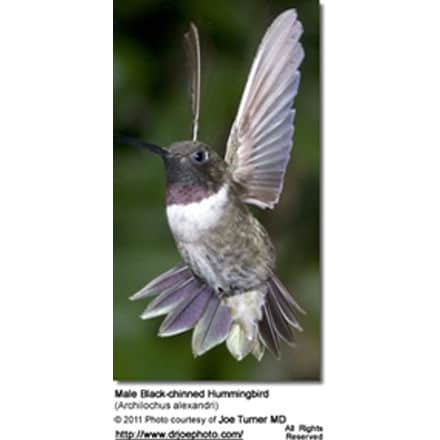
Anna’s Hummingbirds (Calypte anna) – Rare (only 4 reports)
One of the larger and the most vocal hummingbirds in the United States, where it is the only species to produce a song; specifically the males produce a complex series of scratchy noises, sounding like a sharp “chee-chee-chee; when moving from flower to flower, they emit toneless “chip” vocalizations. All other hummingbirds in the United States are mostly silent.
They are well known for their territorial behavior; the male makes elaborate dive displays at other birds and sometimes even at people. At the bottom of their dives, they produce high-pitched loud popping sounds with their tail feathers.
Males have glossy dark rose-red throats and crowns, which may appear black or dark purple in low light. The underside is mostly greyish; and the back metallic green.
Females have light grey chests with white and red spotting on the throat, greenish back and white tipped tails.
They resemble the Costa’s Hummingbirds, but the male’s Costa’s Hummingbird‘s gorget (throat feathers) is longer than that of the Anna’s. They are larger than the Rufous Hummingbirds and lack the rusty coloration of the Rufous Hummingbirds.
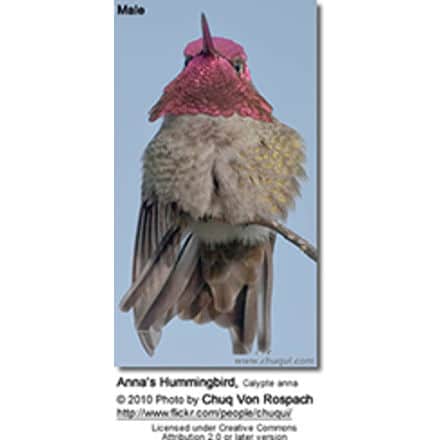
Calliope Hummingbirds (Stellula calliope) – Rare (only 3 reports)
The smallest breeding bird in North America.
They are most easily confused with the Rufous Hummingbirds and the Broad-tailed Hummingbird.
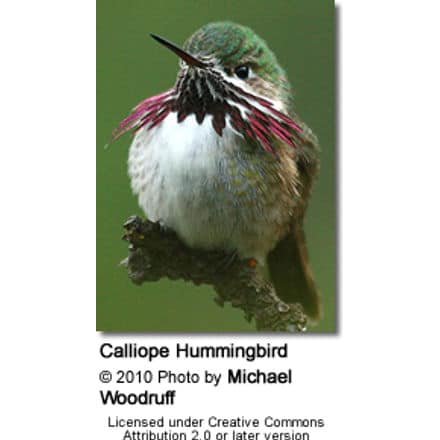
Broad-tailed Hummingbirds (Selasphorus platycercus) – Rare (only 4 reports)
Males can most easily be identified by their iridescent, rose-red throats, white chest feathers and metallic green back and crown and their rounded tails. The males’ tails make whistling noises in flight.
Females lack the flashy throat patch of the male and are mostly pale below. Their white-tipped outer tail feathers are rust-colored close to the body and blackish in the center; the tail feathers in the center range from green to blackish.
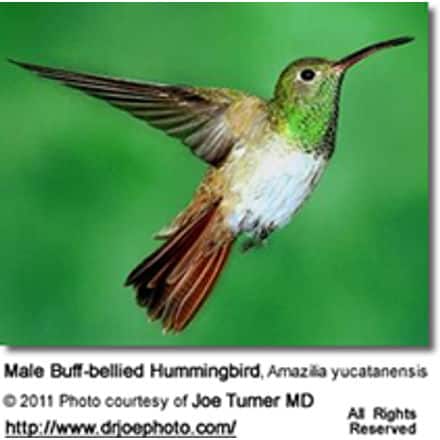
(Amazilia yucatanensis) – Rare (only 1 report in 1993)
The male’s throat is a metallic golden green and the red, dark-tipped bill is straight and slender. Back and head are mostly metallic olive. The lower chest ranges in coloration to whitish with various shades of grey or green, or buffy (yellowish-brown).
The tail and primary wing feathers are rufous (reddish-brown) and slightly forked. The underwing is white.
The female is generally less colorful than the male and has a a dark upper bill
Magnificent or Refulgent Hummingbirds (Eugenes fulgens) – Rare visitor (only 1 report in 1993)
They are nearly twice as large as any other hummingbird species found in this State, and can often be identified by their size alone.
The male has a metallic green throat and a black chest. His forehead and crown are purple and the back is dark green.
The female plumage is less bright. Her chest is solid grey. Her back and crown are olive green. Her tail feathers are pearl-grey tipped.


